SA213T36 seamless steel pipe is a key material in the power, petrochemical, and boiler manufacturing industries. Its performance and processing directly impact equipment safety and energy efficiency in high-temperature and high-pressure environments. The following provides an in-depth analysis from multiple perspectives, including material properties, production processes, application scenarios, and market status, to provide a comprehensive reference for industry practitioners.
First, Material Properties and Standardization System for SA213T36 Seamless Steel Pipe
SA213T36 is a chromium-molybdenum alloy steel pipe specified in the ASME SA213 standard. Its chemical composition, with a chromium (Cr) content of 1.00-1.50% and a molybdenum (Mo) content of 0.44-0.65%, imparts the material with excellent high-temperature strength and oxidation resistance. A comparison of GB5310-2017 and ASTM A213 standards shows that T36 achieves a tensile strength exceeding 80 MPa at 580°C, approximately 40% higher than conventional 20G steel pipe. It's worth noting that the material undergoes a normalizing and tempering heat treatment, with the grain size controlled within the 5-8 range to prevent hardening during welding. According to technical data, the T36 steel pipe produced by the company has been tested by a third party, with a -20°C impact energy rating of over 54J, fully meeting the stringent low-temperature toughness requirements of supercritical units.
Second, an analysis of the precision manufacturing process for SA213T36 seamless steel pipe.
1. Hot rolling process control: A tapered piercing mill coupled with a restrained mandrel continuous rolling technique is used to strictly control the billet heating temperature at 1220±10°C, ensuring uniform metal flow during piercing. Production data from a large steel mill shows that this process can maintain wall thickness tolerances within ±5%, far exceeding the conventional industry standard of ±12.5%.
2. Key cold working technologies: For thin-walled pipes (δ<8mm), a three-roll planetary rolling process is often used. A patent filed by a high-tech enterprise indicates that it has developed gradient cooling technology that can reduce residual stress in cold-rolled tubes by 37% and reduce ovality error to ≤0.15 mm/m.
3. Heat Treatment Innovation: One company utilizes a "two-stage controlled temperature tempering" process (680°C x 2h + 720°C x 1.5h), which increases elongation to over 23% while maintaining HRB 85-90 hardness, approximately 15% higher than conventional processes.
Third, an in-depth analysis of typical application scenarios for SA213T36 seamless steel pipes.
1. Supercritical power plant boilers: Under operating conditions of 620°C/25 MPa, T36 steel pipes used in final-stage superheaters have a design life of over 100,000 hours. A reported retrofit case study of a 1,000 MW unit shows that the use of T36 steel pipes with optimized composition reduced the pipe burst rate from 0.3 per year to 0.02 per year. 2. Petrochemical Hydrogenation Reactors: As a material for quenching hydrogen piping, it must withstand a 400°C high-pressure hydrogen environment. Measured data from a refining project shows that T36 steel pipes with special surface treatment have a hydrogen permeation rate of less than 0.8mm/year, slowing corrosion by approximately 60% compared to traditional materials.
3. Nuclear Power Support Systems: In the AP1000 unit feedwater heating system, T36 steel pipes using internal laser cladding technology have reduced the flow-accelerated corrosion (FAC) rate to less than 0.05mm/year.
Fourth, Market Status and Key Considerations for SA213T36 Seamless Steel Pipes
Current domestic market demand is approximately 80,000-100,000 tons annually, with imports still accounting for approximately 30%. Analysis of quotes from major suppliers indicates that the ex-factory price of φ38×6mm T36 steel pipes will remain in the range of 15,800-16,500 yuan/ton in the third quarter of 2025. Important considerations when purchasing:
- Verify the RT (room temperature) and HT (high temperature) mechanical property data in the warranty.
- Require the supplier to provide a complete intergranular corrosion test report (according to GB/T4334 Method E).
- For high-pressure pipelines, it is recommended to perform ultrasonic testing at a rate of at least 99%.
Fifth, Technical Development Trends of SA213T36 Seamless Steel Pipes
1. Composition Optimization: New T36 steel pipes with 0.08-0.12% vanadium (V) additions have entered the testing phase. Reportedly, their stress-rupture time at 650°C can be extended by 2.5 times.
2. Intelligent Manufacturing: A leading enterprise has built a fully automated production line that uses machine vision to detect surface defects in real time, increasing the product qualification rate from 98.6% to 99.93%.
3. Green Processing: The pickling process is being gradually replaced by the environmentally friendly "mechanical dephosphorization + electrolytic polishing" process, which can reduce hazardous waste generation by over 90%.
As ultra-supercritical units evolve toward 650°C/35MPa parameters, SA213T36 seamless steel pipe will continue to innovate its material systems. End users are advised to establish a full-process quality control system during procurement, including chemical composition spectral analysis, metallographic examination, and high-temperature endurance testing. They should also monitor developments in welding processes for dissimilar steels such as nickel-based alloys like N08800 and T36.
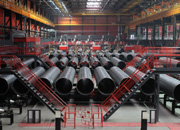 Threeway Steel is known as a professional supplier engaged in manufacturing and distributing a wide range of steel pipe, and our headquarter located the central part of China – Hunan and six associated factories throughout China.
Threeway Steel is known as a professional supplier engaged in manufacturing and distributing a wide range of steel pipe, and our headquarter located the central part of China – Hunan and six associated factories throughout China.
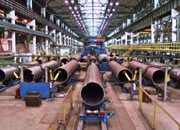 Threeway Steel is known as a professional supplier engaged in designing, manufacturing and distribution of a wide range of steel products with the headquarter located the central part of China – Hunan and six associated factories throughout China.
Threeway Steel is known as a professional supplier engaged in designing, manufacturing and distribution of a wide range of steel products with the headquarter located the central part of China – Hunan and six associated factories throughout China.
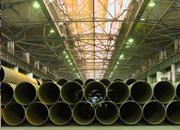 Threeway Steel is known as a professional supplier engaged in designing, manufacturing and distribution of a wide range of steel products with the headquarter located the central part of China – Hunan and six associated factories throughout China.
Threeway Steel is known as a professional supplier engaged in designing, manufacturing and distribution of a wide range of steel products with the headquarter located the central part of China – Hunan and six associated factories throughout China.
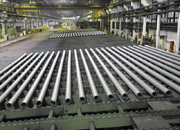 Threeway Steel is known as a professional supplier engaged in designing, manufacturing and distribution of a wide range of steel products with the headquarter located the central part of China – Hunan and six associated factories throughout China.
Threeway Steel is known as a professional supplier engaged in designing, manufacturing and distribution of a wide range of steel products with the headquarter located the central part of China – Hunan and six associated factories throughout China.
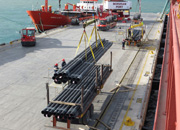 Threeway Steel is known as a professional supplier engaged in designing, manufacturing and distribution of a wide range of steel products with the headquarter located the central part of China – Hunan and six associated factories throughout China.
Threeway Steel is known as a professional supplier engaged in designing, manufacturing and distribution of a wide range of steel products with the headquarter located the central part of China – Hunan and six associated factories throughout China.

